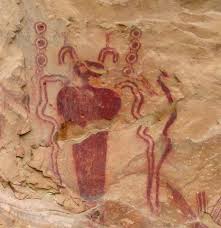Is Graffiti Style a Art Form or Senseless Vandalism?
- nettypakjira

- Oct 7, 2015
- 3 min read
In the third assignment, I have to photograph 5 different graffiti styles in Bangkok, at first I do not know where can I photograph these styles. I know I have seen them before but I cannot remember at all where did I see them because I think Graffiti is just meaningless destruction of other people’s properties so I ignore them. But after I listen to the lecture "Hip Hop Culture - Graffiti Styles", I feel about these paintings as an energetic urban art. Then I start looking around on the way home and places near Chulalongkorn University. And I am very surprise that these paintings are everywhere, even on my way home. I walk pass Si Phraya Road everyday and there are many Graffiti styles here but I never notice them at all. Therefore I want to know what other people thoughts of Graffiti styles whether it is a vibrant urban art form or senseless vandalism.

After I researched the topic from the internet, I found more details about Graffiti styles, its history, when did graffiti first become popular and also viewpoints from both sides of the debate of determining whether graffiti is an art or vandalism.
Graffiti are writing or drawings that have been scribbled, scratched, or painted illegally on a wall or other surface, often in a public place. Graffiti range from simple written words to elaborate wall paintings, and they have existed since ancient times.
Ancient Graffiti
The first drawings on walls appeared in caves thousands of years ago. Later the Ancient Romans and Greeks wrote their names and protest poems on buildings. Modern graffiti seems to have appeared in Philadelphia in the early 1960s, and by the late sixties it had reached New York. The new art form really took off in the 1970s, when people began writing their names, or ‘tags’, on buildings all over the city. In the mid seventies it was sometimes hard to see out of a subway car window, because the trains were completely covered in spray paintings.
In the early days, the ‘taggers’ were part of street gangs who were concerned with making their territory. They worked in groups and called what they did ‘writing’ - the term ‘graffiti’ was first used by The New York Times and the novelist Norman Mailer. Art galleries in New York began buying graffiti in the early seventies. But at the same time that it began to be regarded as an art form, John Lindsay, the then mayor of New York, declared the first war on graffiti. By the 1980s it became much harder to write on subway trains without being caught, and instead many of the more established graffiti artists began using roofs of buildings or canvases.

The debate over whether graffiti is art or vandalism is still going on. Peter Vallone, a New York city councillor, thinks that graffiti done with permission can be art, but if it is on someone else’s property it becomes a crime. ‘I have a message for the graffiti vandals out there,’ he said recently. ‘Your freedom of expression ends where my property begins.’ On the other hand, Felix, a member of the Berlin-based group Reclaim Your City, says that artists are reclaiming cities for the public from advertisers, and that graffiti represents freedom and makes cities more vibrant.

For decades graffiti has been a springboard to international fame for a few. Jean-Michel Basquiat began spraying on the street in the 1970s before becoming a respected artist in the ’80s. The Frenchman Blek le Rat and the British artist Banksy have achieved international fame by producing complex works with stencils, often making political or humorous points. Works by Banksy have been sold for over $ 154000. Graffiti is now sometimes big business.

In conclusion, painting graffiti has good and bad sides. The benefit is that if these wall paintings are done with permission, they can be art that represent freedom and make the city more vibrant. Moreover they can be sold and generate a lot of money for the owner. However they also have disadvantages. If graffiti are done on someone else’s property, they violates the law and becomes crimes. In addition, they may cause annoyance for people who prefer clean and clear cities instead.





Comments